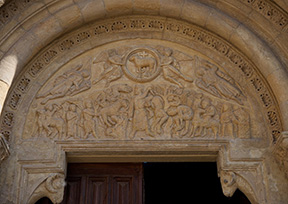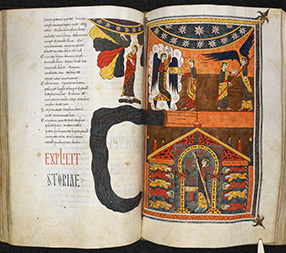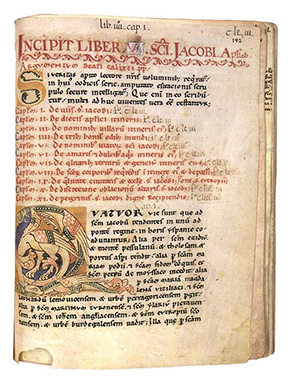Current research
Next project
Twelfth-century Romanesque art in the Iberian peninsula and beyond.
My next project will focus on twelfth-century Romanesque art in the Iberian peninsula and beyond. It will build on the approaches established in my recent articles on papal legates and their networks, and on the status of sculptors who may have trained in taifa kingdoms. These ideas were also woven into the narrative of Art in Spain and Portugal (2016), which posited a caesura in artistic production c. 1109. I anticipate that it will also link with some of my earlier articles on Alfonso VIII and Leonor of England.
The scope and detailed focus of this study is still in progress. As part of this process, I have three articles in press:
Recent articles

1. “Agency and the re-invention of slab relief sculpture at San Isidoro de León c. 1100”
In Romanesque Art: Patrons and Processes, ed. John McNeill, Richard Plant, Manuel Castiñeiras, British Archaeological Association, Leeds, forthcoming 2017.
This essay develops the proposal in chapter 8 of Art in Spain and Portugal (2016) concerning the Puerta del Cordero, one of the south doorways at San Isidoro in León. It argues that the current arrangement of the sculpture in a tympanum is a later confection and that the original sculptural programme consisted of flat slabs. It also suggests that this programme expressed the earlier purpose of the monastery, liturgical intercession for King Fernando I, before San Isidoro became a place of pilgrimage managed by Augustinian canons.

2. “Eating the sweet and bitter book. The ingestion of text during liturgical change in late eleventh-century Castile”
In Medieval Manuscripts in Motion, ed. Alicia Miguélez Cavero, forthcoming 2017
This article re-examines a liturgical manuscript from Silos (BL Add. 30848) in light of work that has been undertaken by liturgists and musicologists over the last decade on meaning, and the image of John, the author of the Apocalypse, consuming the book (Silos Apocalypse, BL Add. 11965).
3. “La producción de Beatos durante el reinado de Alfonso VIII de Castilla y Leonor de Inglaterra: ¿una respuesta a la caída de Jerusalén?”
In Alfonso VIII y Leonor de Inglaterra, ed. Marta Poza, Madrid: Ediciones Complutenses, forthcoming 2017
 The resurgence in the production of Beatus manuscripts towards the end of the twelfth century, and into the thirteenth, has never been satisfactorily explained. Several of the books were written and illuminated during the reign of Alfonso VIII of Castile and his wife Leonor of England, and they are usually dated c. 1170-1180.
The resurgence in the production of Beatus manuscripts towards the end of the twelfth century, and into the thirteenth, has never been satisfactorily explained. Several of the books were written and illuminated during the reign of Alfonso VIII of Castile and his wife Leonor of England, and they are usually dated c. 1170-1180.
This article will suggest that they were produced after the Fall of Jerusalem in 1187. Arguments will be based partly on comparisons with the Portuguese Lorvão Beatus, clearly dated to 1189, and probably associated with King Sancho I’s crusading efforts. Further evidence is drawn from close study of particular images in the manuscripts, which will be linked to the rhetorical language used by the popes to motivate rulers to reclaim the Holy City.
Finally it will be suggested that the books were objects of royal patronage and that they may have functioned like liturgical clamores, prayers intended to bring about peace, and in this case the liberation of Jerusalem. The new impetus in Beatus production was an integral part of the fashion for apocalyptic ideas across Europe, but those ideas were realised in Iberia in a particular way that also connected to crusading in the peninsula.
Conference paper write-up
BAA Romanesque conference at Oxford
I am currently writing up my paper from the BAA Romanesque conference at Oxford, April 2016: “An Itinerary of Holy Bodies?: Recommendations from the Pilgrim’s Guide.” This returns to Christopher Hohler’s article: “A Note on Jacobus“, Journal of the Warburg and Courtauld Institutes 35 (1972) 31-70, and presents the structure and contents of Book 8 of the Pilgrim’s Guide as a gentle satire.